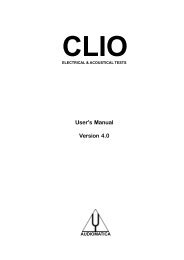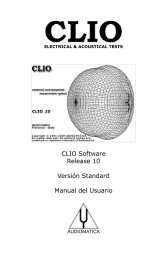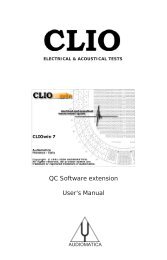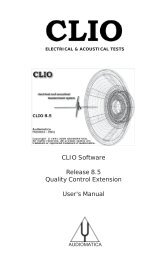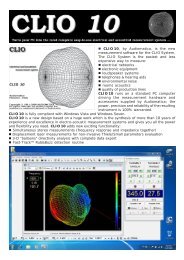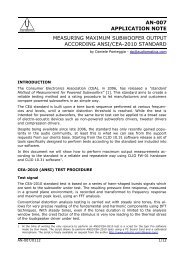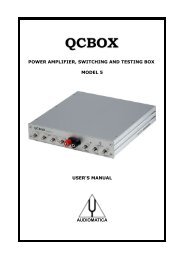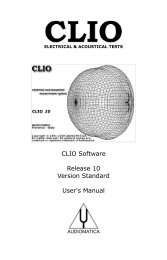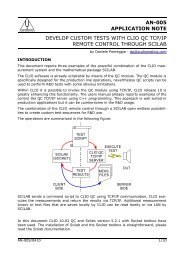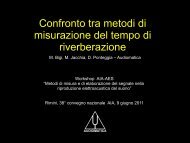CLIOwin 7 PCI User's Manual - Audiomatica
CLIOwin 7 PCI User's Manual - Audiomatica
CLIOwin 7 PCI User's Manual - Audiomatica
You also want an ePaper? Increase the reach of your titles
YUMPU automatically turns print PDFs into web optimized ePapers that Google loves.
If you had chosen a wrong size, like an all tone of 8k, you would have obtained the<br />
following analysis which clearly shows a lack of energy at alternating bins; the effect<br />
is visible only at low frequency due to the logarithmic nature of the graph.<br />
<strong>CLIOwin</strong> has the possibility of internal trigger (and relative delay) i.e. triggering with<br />
respect of the generated signal thus obtaining a synchronous capture. As an example<br />
let's see how a measurement presented in section 11.4 was done; please refer to<br />
figures 11.9, 11.10 and 11.11. We have an acoustical measurement of a tweeter, done<br />
stimulating it with a 2kHz 10ms tone burst (see 5.4.2 for details about programming<br />
a bursted sinusoid); the FFT measurement is done using the internal trigger; Fig. 11.9<br />
shows the analysis and the captured time data that clearly shows the flight time from<br />
the tweeter to the microphone, Fig. 11.9, Even if the analysis is not our final target, it<br />
shows the power of synchronous acquisition which permits the display of the arrival<br />
delay of sound to the microphone. To obtain the desired result, as explained in 11.4,<br />
Chapter 9 - FFT 99



